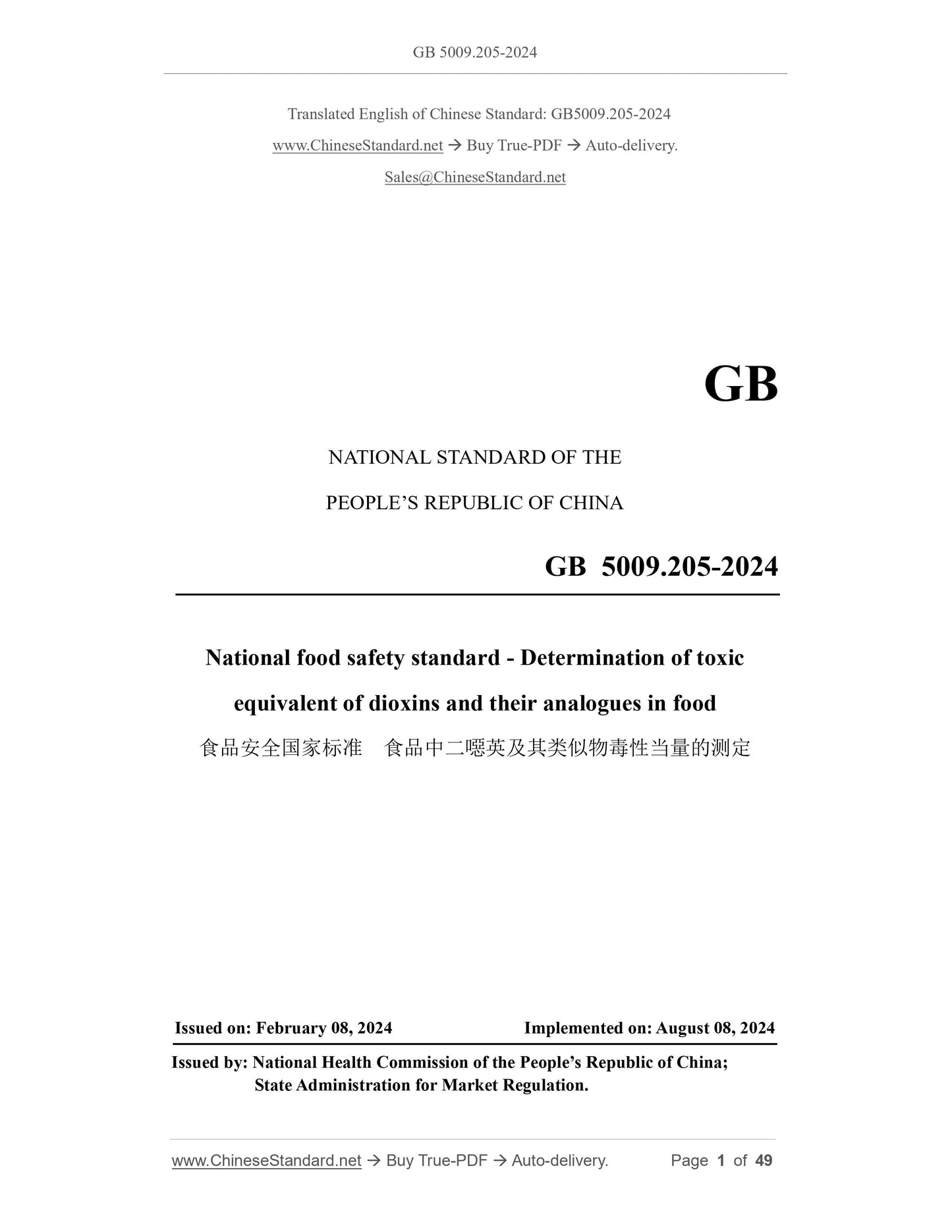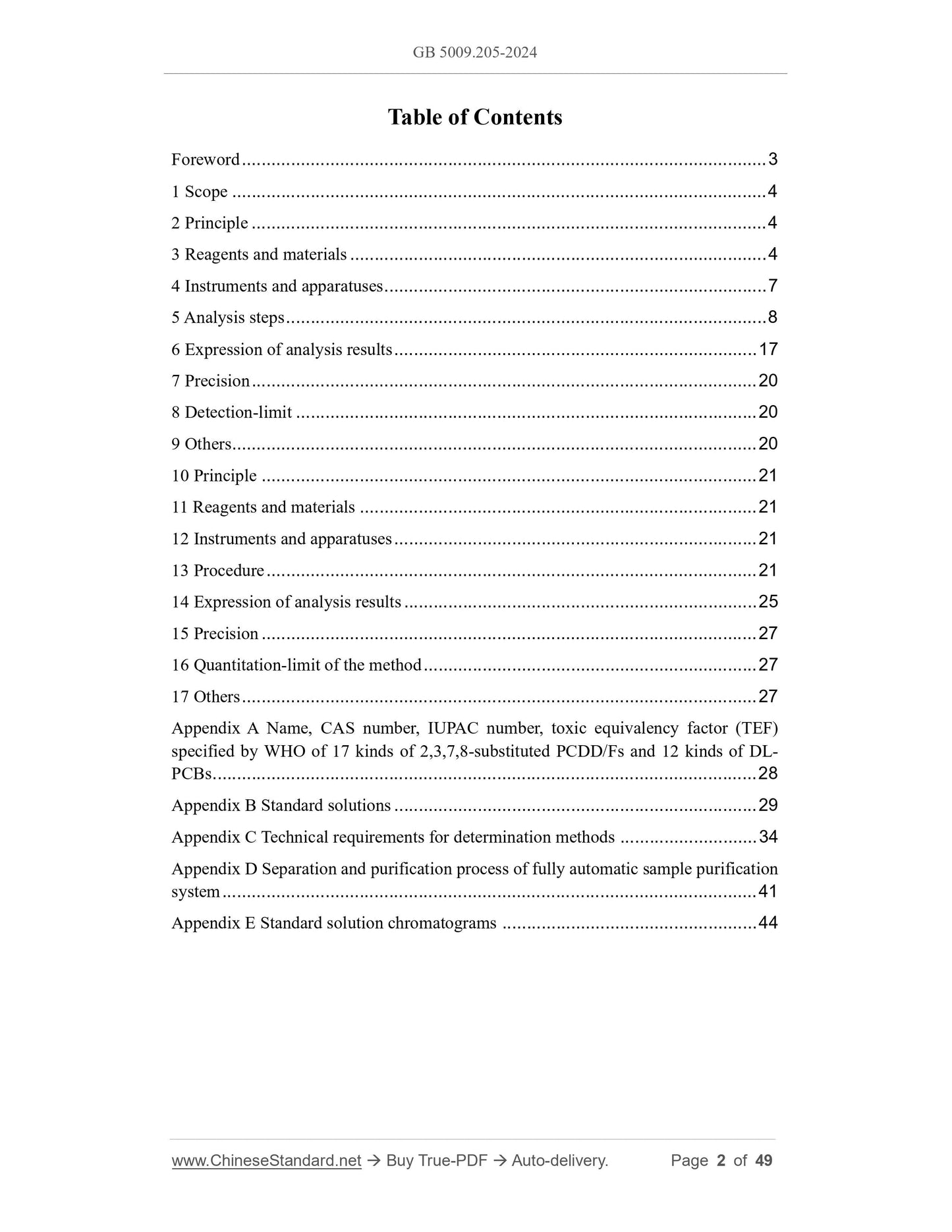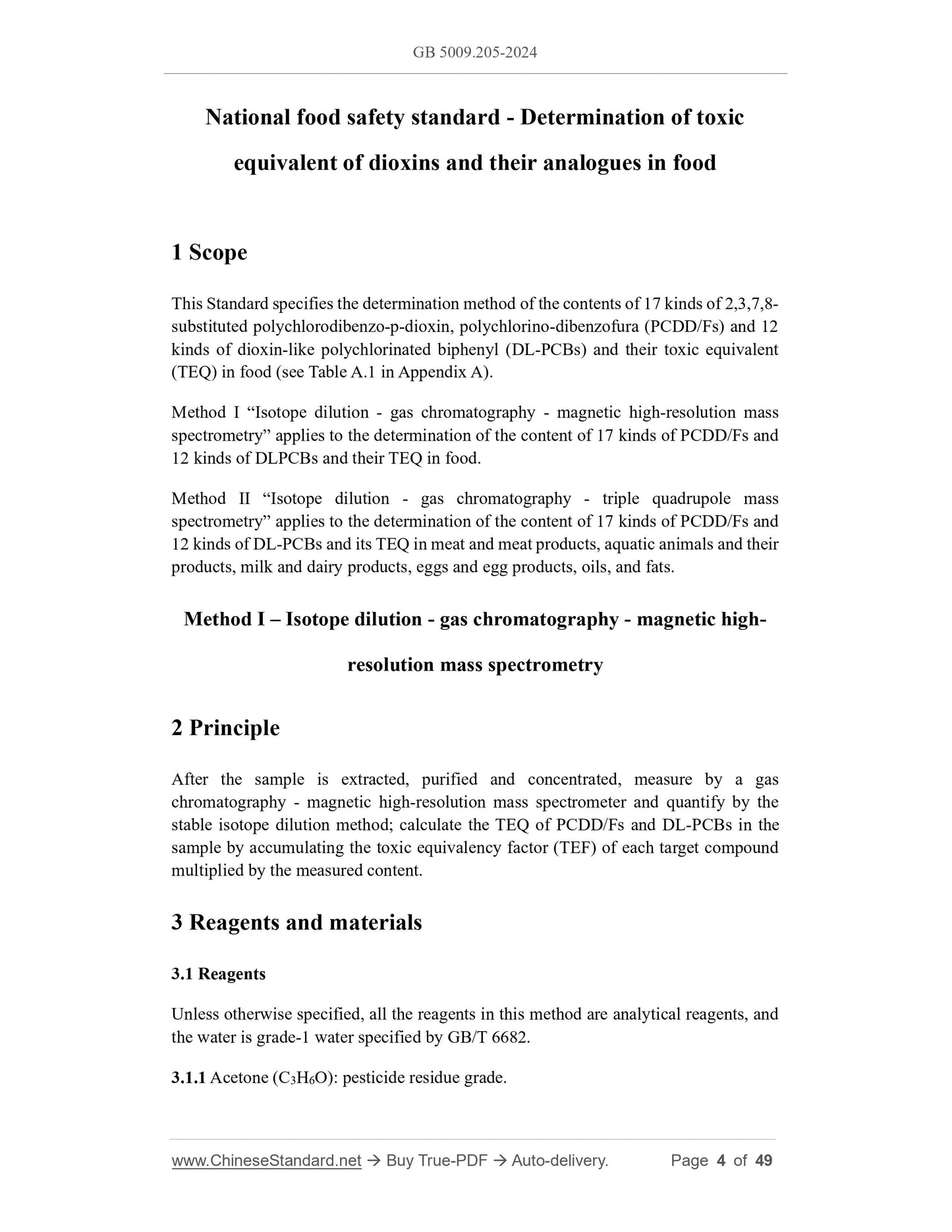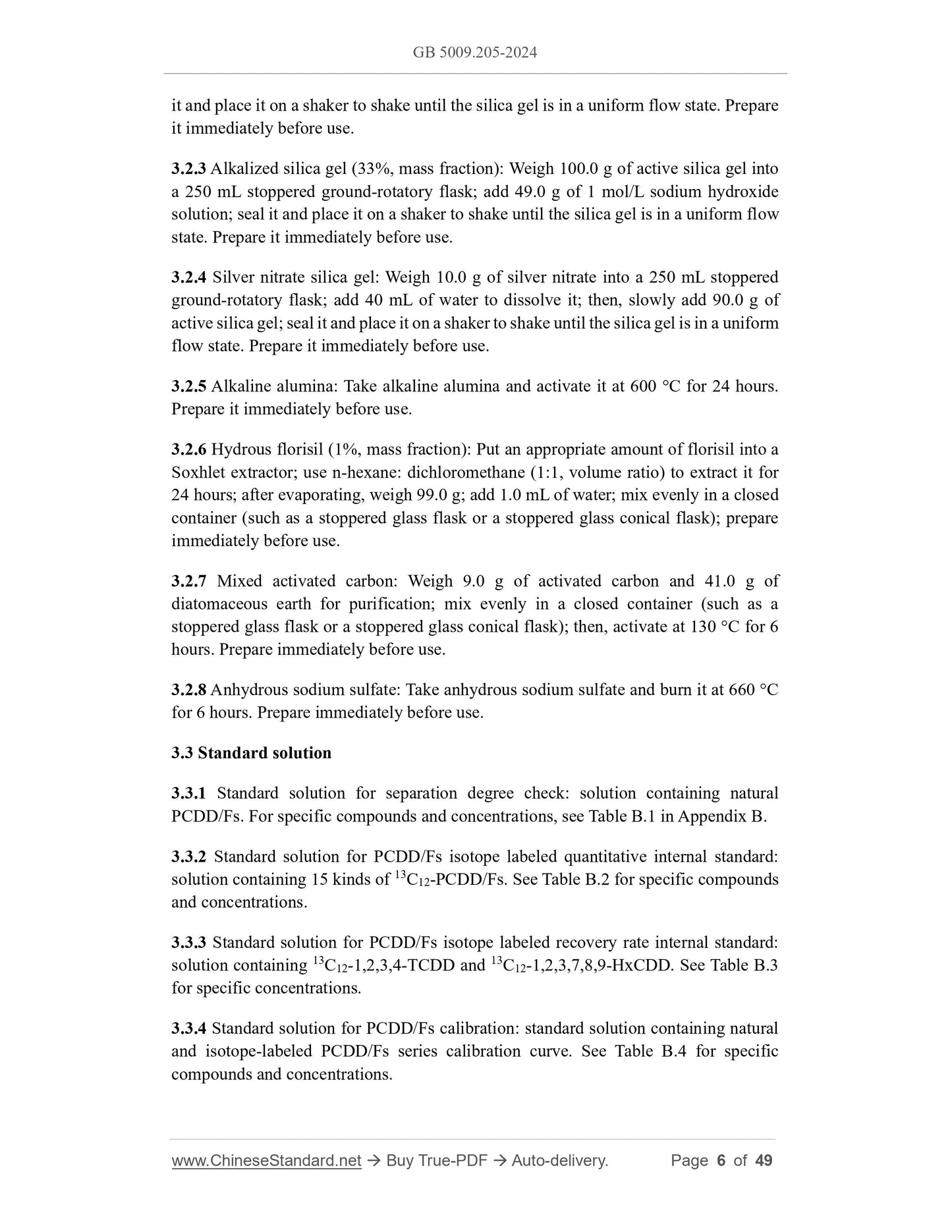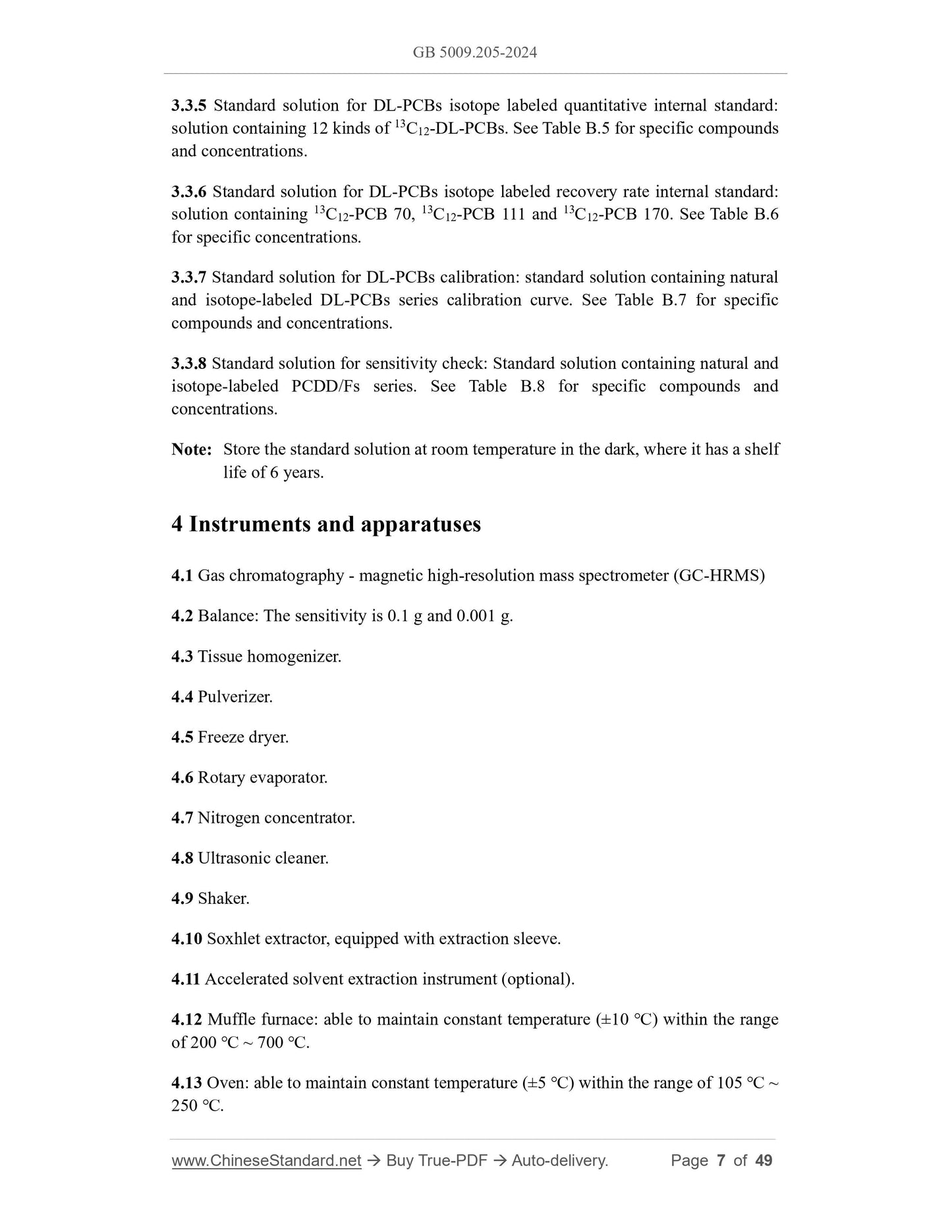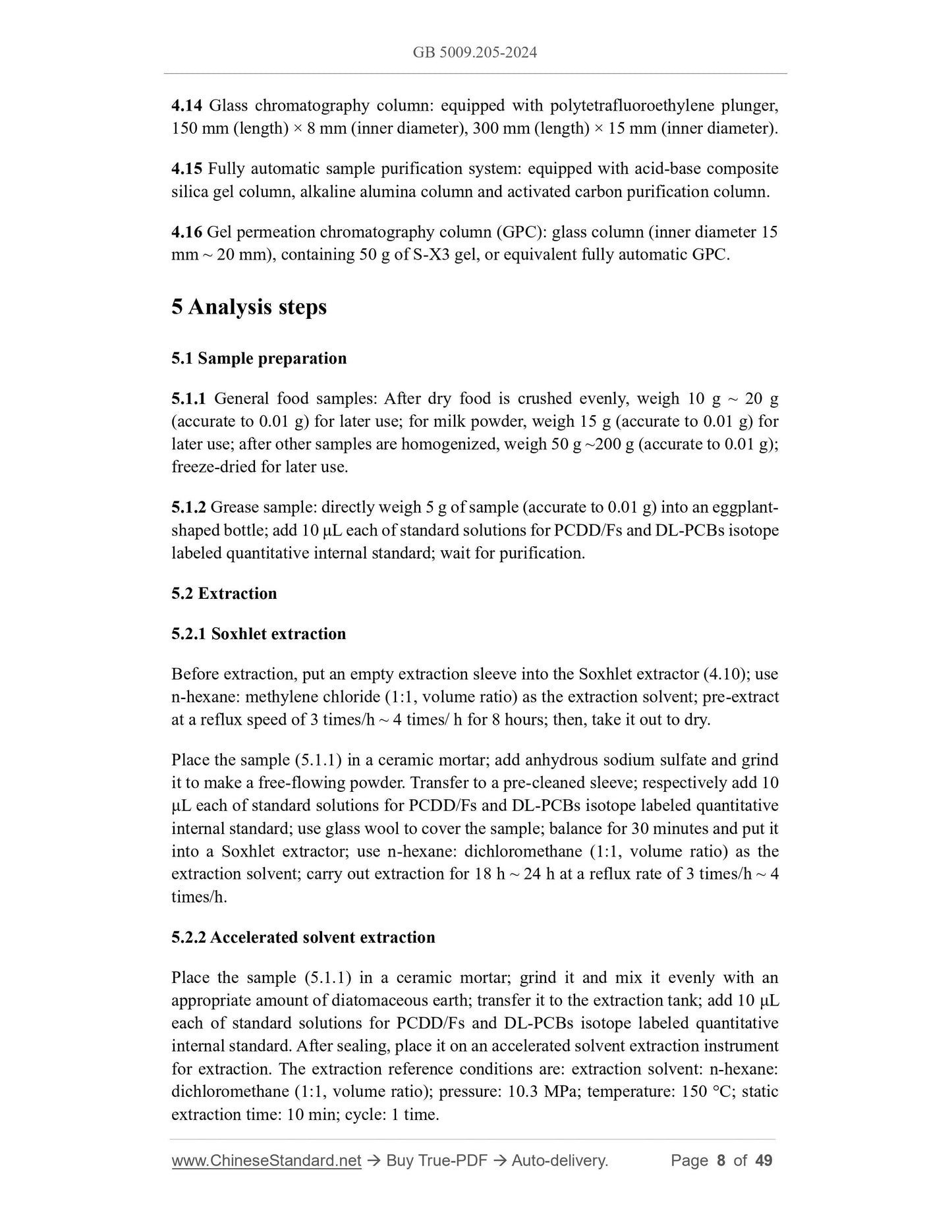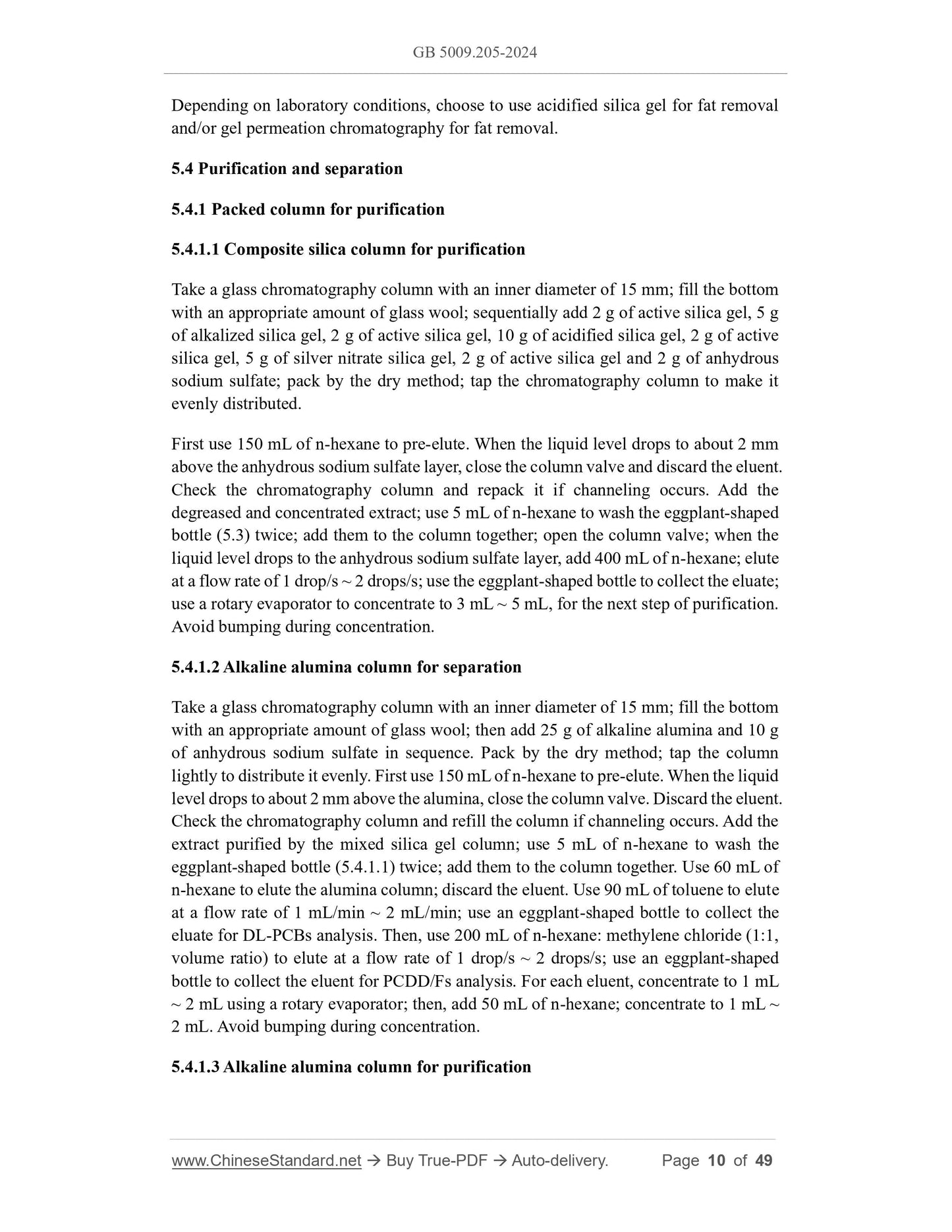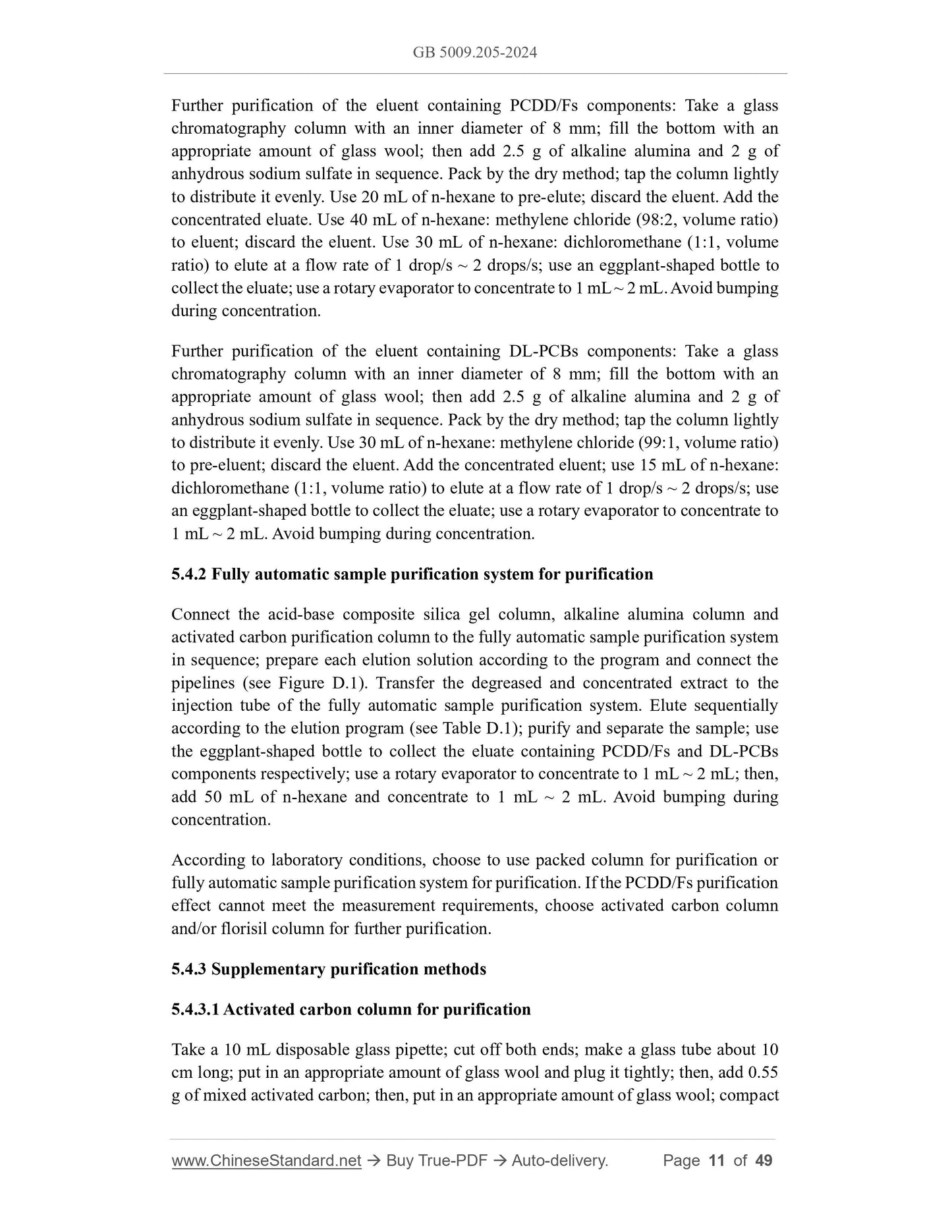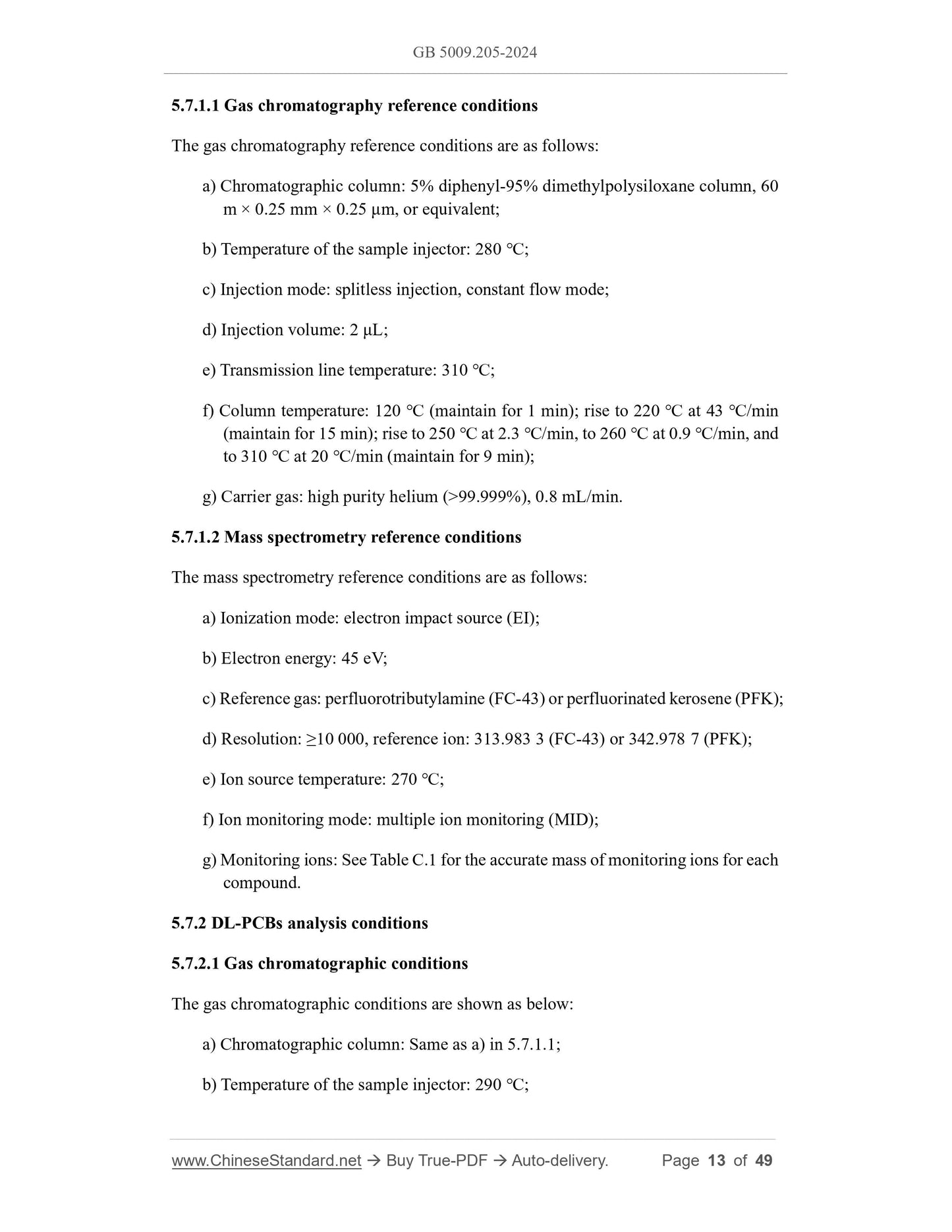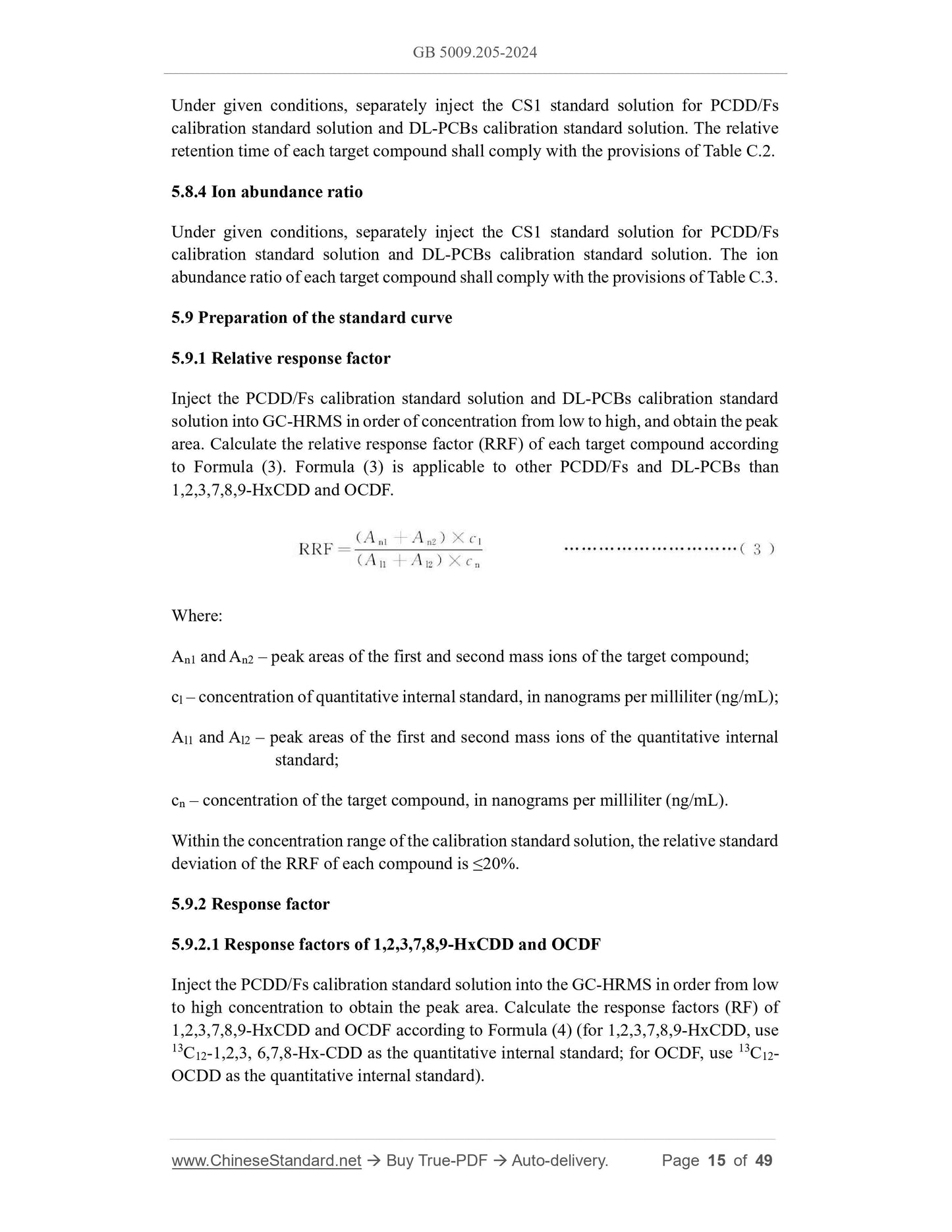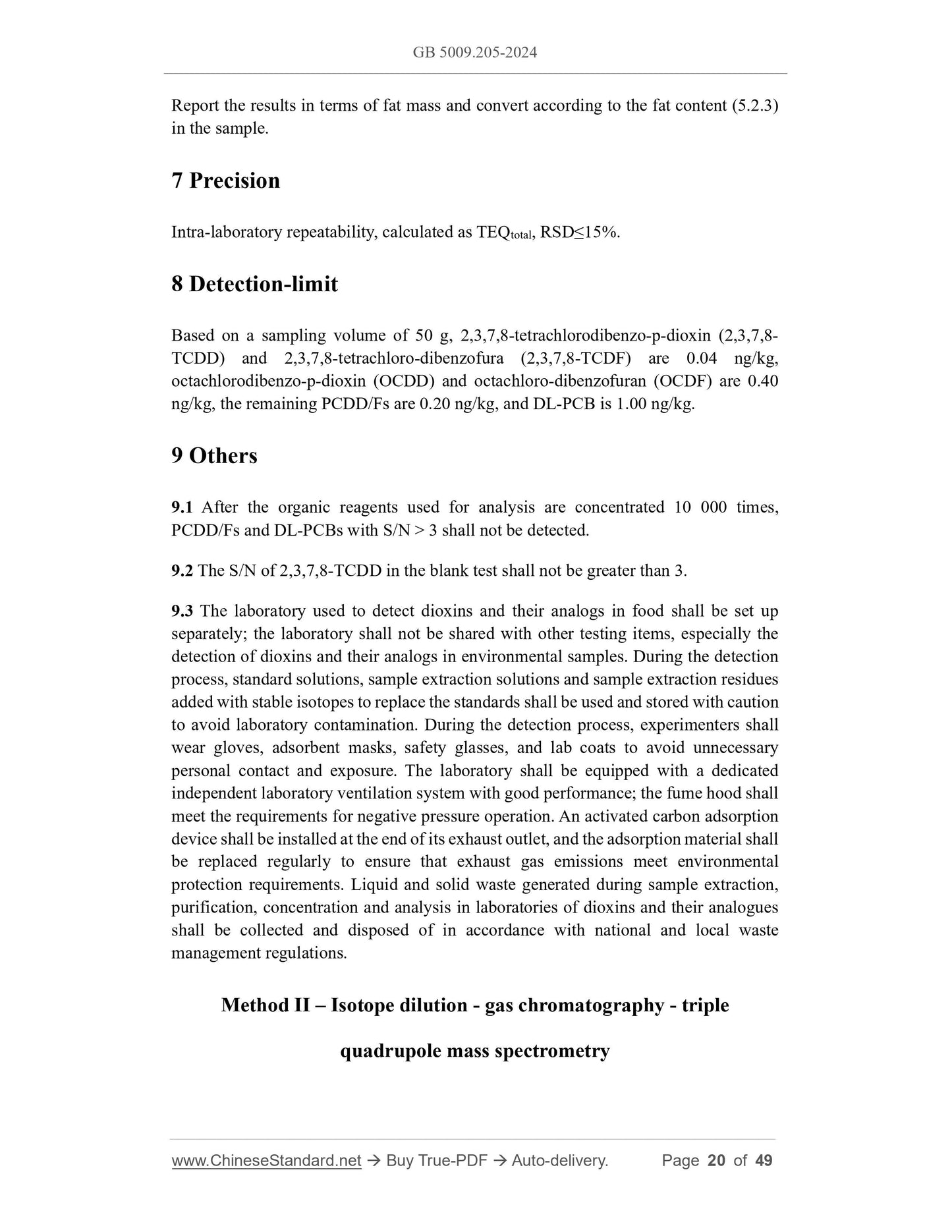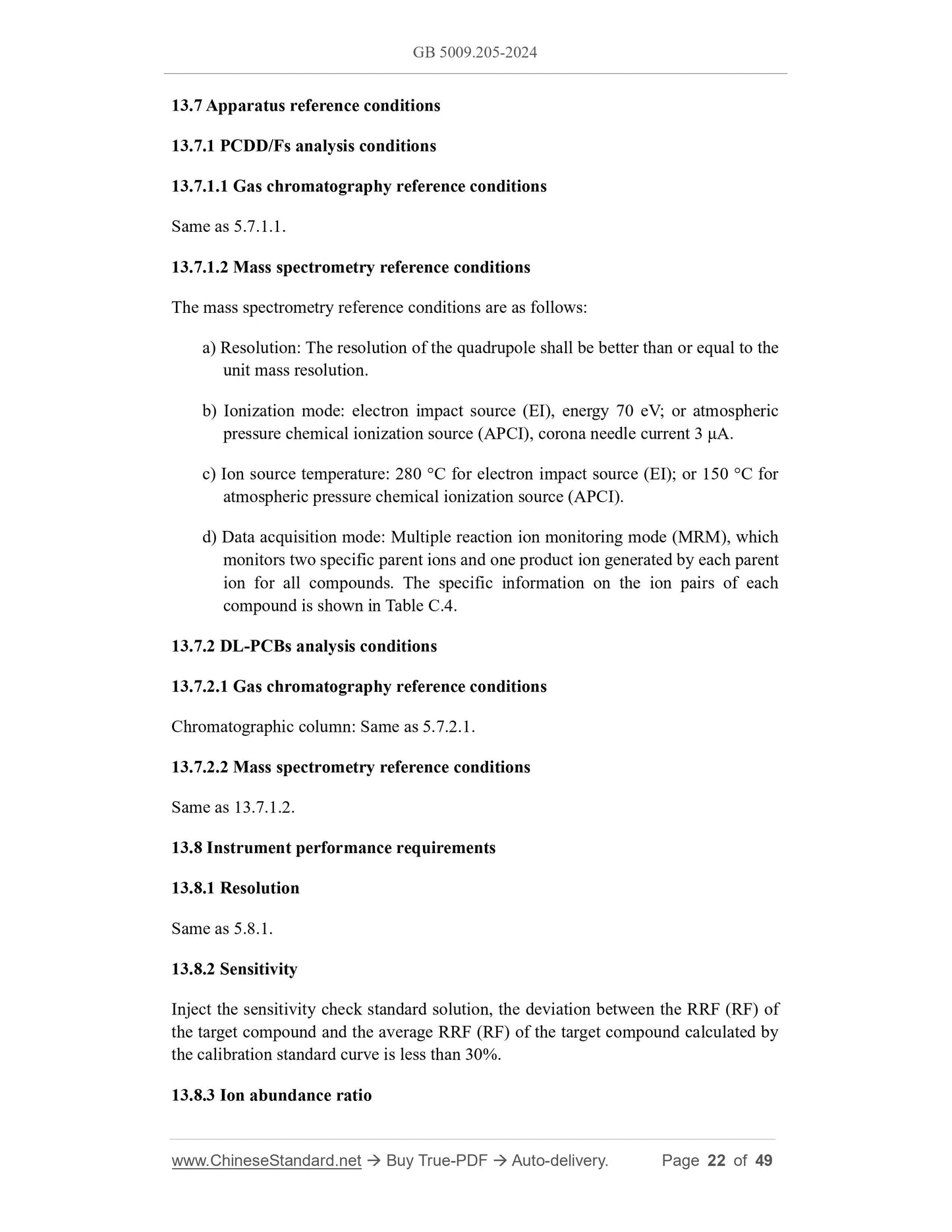1
/
of
12
www.ChineseStandard.us -- Field Test Asia Pte. Ltd.
GB 5009.205-2024 English PDF
GB 5009.205-2024 English PDF
Regular price
$635.00
Regular price
Sale price
$635.00
Unit price
/
per
Shipping calculated at checkout.
Couldn't load pickup availability
GB 5009.205-2024: National food safety standard - Determination of toxic equivalents of dioxins and their analogues in food
Delivery: 9 seconds. Download (and Email) true-PDF + Invoice.Get Quotation: Click GB 5009.205-2024 (Self-service in 1-minute)
Newer / historical versions: GB 5009.205-2024
Preview True-PDF
Scope
This Standard specifies the determination method of the contents of 17 kinds of 2,3,7,8-substituted polychlorodibenzo-p-dioxin, polychlorino-dibenzofura (PCDD/Fs) and 12
kinds of dioxin-like polychlorinated biphenyl (DL-PCBs) and their toxic equivalent
(TEQ) in food (see Table A.1 in Appendix A).
Method I “Isotope dilution - gas chromatography - magnetic high-resolution mass
spectrometry” applies to the determination of the content of 17 kinds of PCDD/Fs and
12 kinds of DLPCBs and their TEQ in food.
Method II “Isotope dilution - gas chromatography - triple quadrupole mass
spectrometry” applies to the determination of the content of 17 kinds of PCDD/Fs and
12 kinds of DL-PCBs and its TEQ in meat and meat products, aquatic animals and their
products, milk and dairy products, eggs and egg products, oils, and fats.
Method I – Isotope dilution - gas chromatography - magnetic high-
resolution mass spectrometry
Basic Data
| Standard ID | GB 5009.205-2024 (GB5009.205-2024) |
| Description (Translated English) | National food safety standard - Determination of toxic equivalents of dioxins and their analogues in food |
| Sector / Industry | National Standard |
| Classification of Chinese Standard | X09 |
| Word Count Estimation | 40,418 |
| Date of Issue | 2/8/2024 |
| Issuing agency(ies) | National Health Commission of the People's Republic of China, State Administration for Market Regulation |
Share
